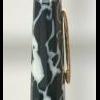Cellulose nitrate vs. acetate
-
Forum Statistics
354.9k
Total Topics4.6m
Total Posts -
Member Statistics
127,991
Total Members18,857
Most OnlineNewest Member
MichaelMaltese
Joined -
Images
-
Albums
-
Swan Pen Tray Stand from store display
- By VacNut,
- 0
- 0
- 7
-
GlenV
- By GlenV,
- 0
- 2
- 73
-
USG 7
- By USG,
- 0
- 0
- 52
-
OCArt #2
- By OCArt,
- 0
- 2
- 31
-
gweimer1 gallery
- By gweimer1,
- 0
- 2
- 16
-


















.thumb.jpg.f07fa8de82f3c2bce9737ae64fbca314.jpg)



.thumb.jpg.331e554113c33fb39d5bf3233878978a.jpg)





Recommended Posts
Create an account or sign in to comment
You need to be a member in order to leave a comment
Create an account
Sign up for a new account in our community. It's easy!
Register a new accountSign in
Already have an account? Sign in here.
Sign In Now